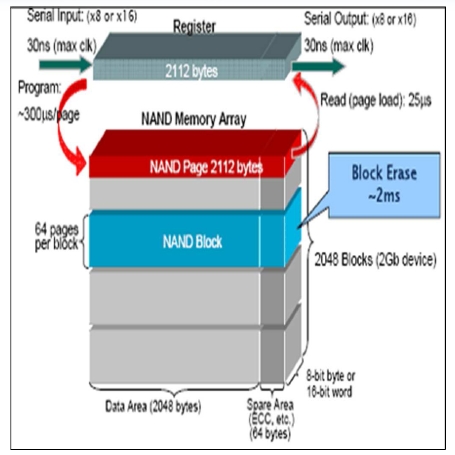Flash Memory
Flash memory is a type of electrically
erasable programmable read-only memory (EEPROM).
The name comes from how the memory is
designed -- a section of memory cells can be erased in a single action or in a
"flash."
A common use of flash memory is to store
the BIOS settings in a computer's ROM.
When the BIOS needs to be changed, the
flash memory can be written in blocks, rather than bytes, making it easy to
update. Most modems use flash memory for the same reason.
Though flash
memory was orginally used inside computers, it has invaded many other areas
outside the box.
Flash memory cards used for digital
cameras, cellular phones, networking hardware, and PC cards.
Though the memory's read/write speed is
not lightning fast, it is nice to be able to tote around a little card rather
than a cumbersome hard drive.

Using flash memory cards
A
flash memory card is a removable storage device capable of holding digital
photos, music, video, documents, and other files. These small, removable cards
are used to store files in a wide variety of mobile devices, such as digital
and video cameras, mobile phones, and portable music players.
There
are many different types of flash memory cards. Here are some of the most
popular types:
·
Secure
Digital (SD)
·
CompactFlash
(CF)
·
MultiMediaCard
(MMC)
·
Memory
Stick
·
xD-Picture
Card
Note
·
There
are several different variations of SD cards, including SDXC (SD Extended
Capacity), SDHC (SD High Capacity), miniSD, and microSD.
Most flash
memory cards plug into a device or computer through a custom port (an SD port
for SD cards, a CompactFlash port for CompactFlash cards, and so forth). Some
computers come with ports that allow you to plug in many different types of
flash memory cards.
When you connect
a flash memory card to your computer, Windows will
automatically recognize it and allow you to transfer files from the card to
your computer.
Transferring
files to your computer
There are two ways to transfer files
from a flash memory card to your computer:
·
Remove
the card from the device and plug it into a memory card reader connected to
your computer. Windows will
recognize the card and offer you options for transferring the files on the card
to your computer. Some memory card readers are installed in a computer, while
others are portable and can be plugged into a computer through a USB port.
·
Leave
the card inside the device and connect the device to your computer, usually
with a USB cable. Then, transfer the files from the device to your computer
using the connection cable that came with the device.
If you connect a flash memory card to
your computer and nothing happens, then Windows isn't
able to detect the card.Windows 7 might not recognize some SD cards that
were used on a computer running a previous version of Windows.
To
check if Windows can
detect your card, click the Start button  ,
click Computer,
and then look under Devices with Removable Storage for the flash memory card.
,
click Computer,
and then look under Devices with Removable Storage for the flash memory card.
No comments:
Post a Comment